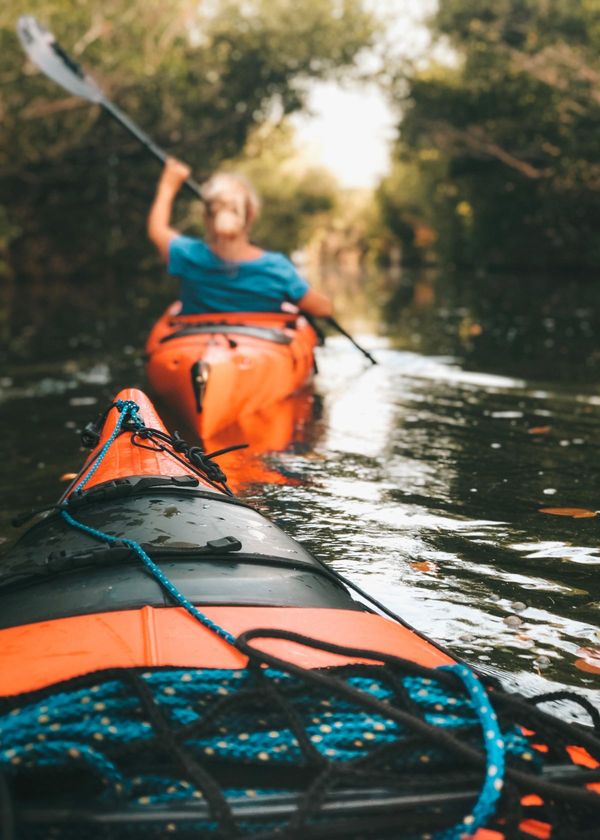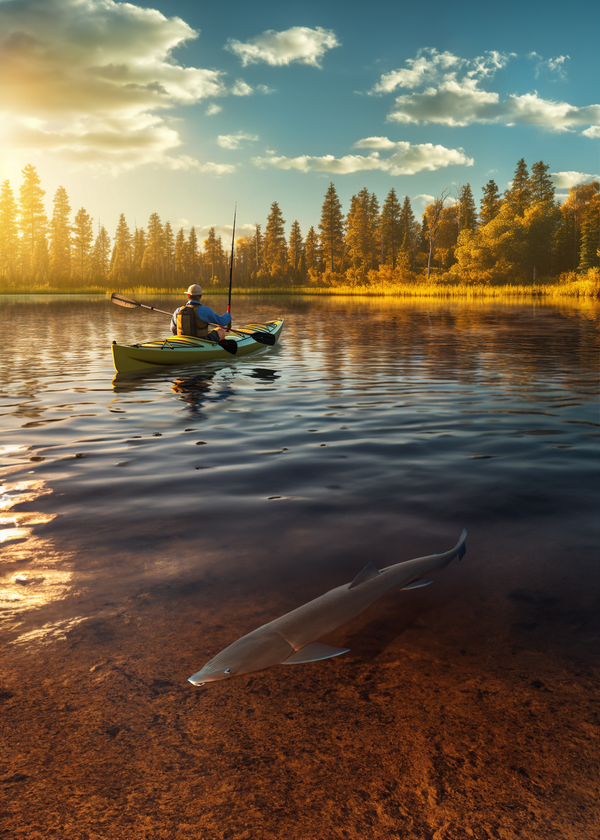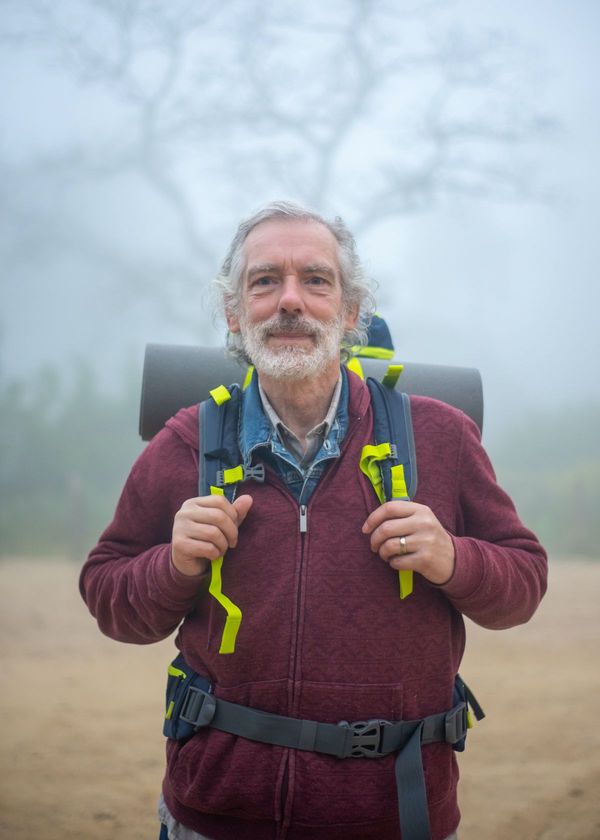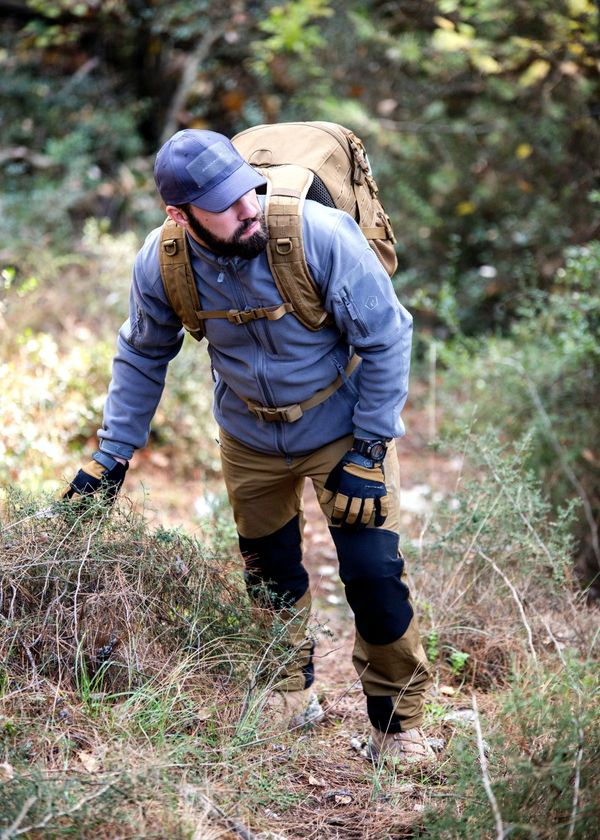Kayaking is a great outdoor activity that provides exercise, adventure, and a way to explore nature. Whether paddling in calm lakes or whitewater rapids, it’s important to know how to paddle a kayak for safety and efficiency properly. In this guide, you will learn the basic techniques for kayaking and how to handle your kayak in different conditions.
The kayak paddle is the main tool used for propulsion and steering. A proper paddle stroke is essential for smooth, efficient movement and control in choppy waters. The paddle also stabilizes the kayak, maintains balance, and negotiates rapids.
It’s important to remember that kayaking is a low-impact sport, but it can still be physically demanding, especially in challenging conditions. Before you set out, ensure you have the proper equipment, including a life jacket and appropriate clothing. You should also be aware of the weather conditions and any potential hazards on the water.
In this guide, we’ll cover the basics of kayak paddling, including the different types of kayaking, how to grip the paddle, and the basic forward and backward strokes. We’ll also discuss essential safety considerations. Whether you’re a beginner or an experienced kayaker, this guide will help you improve your paddling skills and enhance your enjoyment of this exciting water sport.

Different Types of Kayaking
Kayaking is an excellent way to enjoy the outdoors, especially if you are looking for a fun and relaxing activity. Kayaks are also great for fitness because they give you a low-impact workout that is easy on the joints.
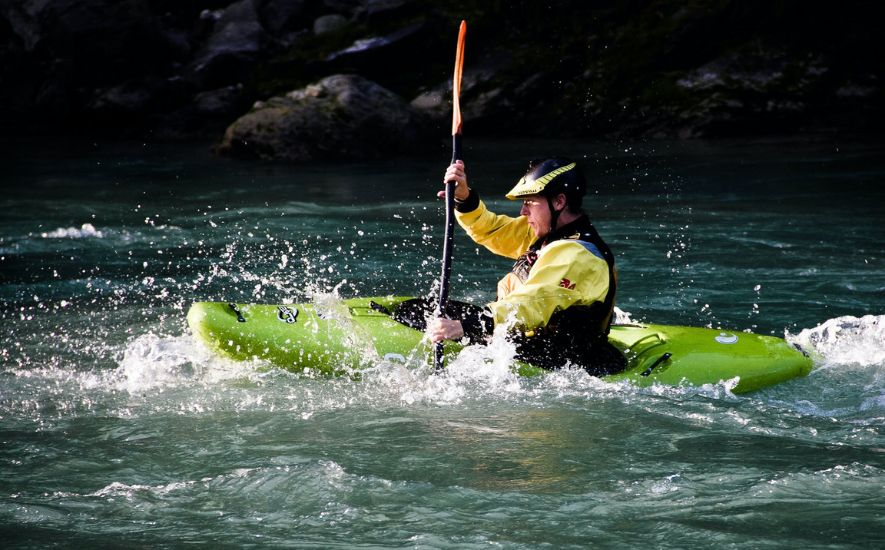
There are many different types of kayaks, but they all have some things in common. All kayaking requires narrow watercraft, has a low profile, and can be propelled through the water by the action of the paddler's hands and feet.
Most kayaks are made from either plastic or fiberglass and come in a variety of sizes depending on your needs. There are many different types of kayaking to choose from, including:
Recreational Kayaking
Recreational kayaking is the most popular sport and pastime in the world. It involves paddling on flat water with a single-bladed paddle. The kayak is propelled with a forward and backward stroke (or "recovery").
Recreational kayaking can be done on lakes, ponds, slow-moving rivers, or calm sea waters. It's an excellent way to get out into nature and enjoy the scenery from the water's surface. With a recreational kayak, you can explore new places while getting exercise and having fun at the same time.
Whitewater Kayaking
Whitewater kayaks are made specifically for whitewater rivers where rapids and whitewater occur frequently. Whitewater kayaks are more durable than recreational kayaks since they must withstand frequent impacts with rocks or other obstacles found in whitewater rivers or streams.
Whitewater kayakers often use special equipment such as helmets and life vests to increase their safety when paddling in these conditions.
Sea Kayaking
Sea kayaks are designed with large open cockpits that allow the paddler to sit in a more natural position than other types of kayaks.
Because they are wider than other types of boats, sea kayaks are built with flatter bottoms so they can be easily maneuvered through waves or even surf conditions.
Sea kayaks are ideal for long-distance paddling trips where comfort and performance capabilities are important. They are also great for beginners who want to learn about paddling techniques before progressing further into the sport.
Touring Kayaking
In this type of kayaking, you'll travel long distances at a moderate pace while enjoying the beautiful scenery. It's great for families who want to spend time together outdoors without worrying about being too physically active or having too much fun.
Touring kayaks are typically longer than recreational kayaks (so they can hold more gear), but they're also wider and easier to paddle through choppy waters like waves or rapids than other types of boats because they have more stable hulls than smaller recreational models do
Fishing Kayak
A fishing kayak is a special type of boat that allows you to fish from it. This type of boat has a large open cockpit that allows you to stand up and fish from it without fear of falling overboard or getting wet.
It also has rod holders on either side to keep your fishing gear close while you're paddling around looking for fish. In addition, it is equipped with an outrigger system that keeps the boat stable even when you're standing up to cast your line into the water.
Surf kayaking
Surfing is an activity that has been around for ages. It is a great way to get out in the water and have fun. It can also be a great way to enjoy your time with friends or family.
There are many different ways you can go about surfing, including kayaking. Kayaking is a great way to get out on the water, but it can also be used as a great way to surf, especially if you are looking for something more relaxing than surfing on a board.
Surf kayaking involves using a kayak as you would use any other type of boat. The difference between this and regular kayaking is that instead of paddling around, you will be surfing waves and having fun doing so.
This form of kayaking can be done by anyone who knows how to swim and knows how to paddle their own boat.
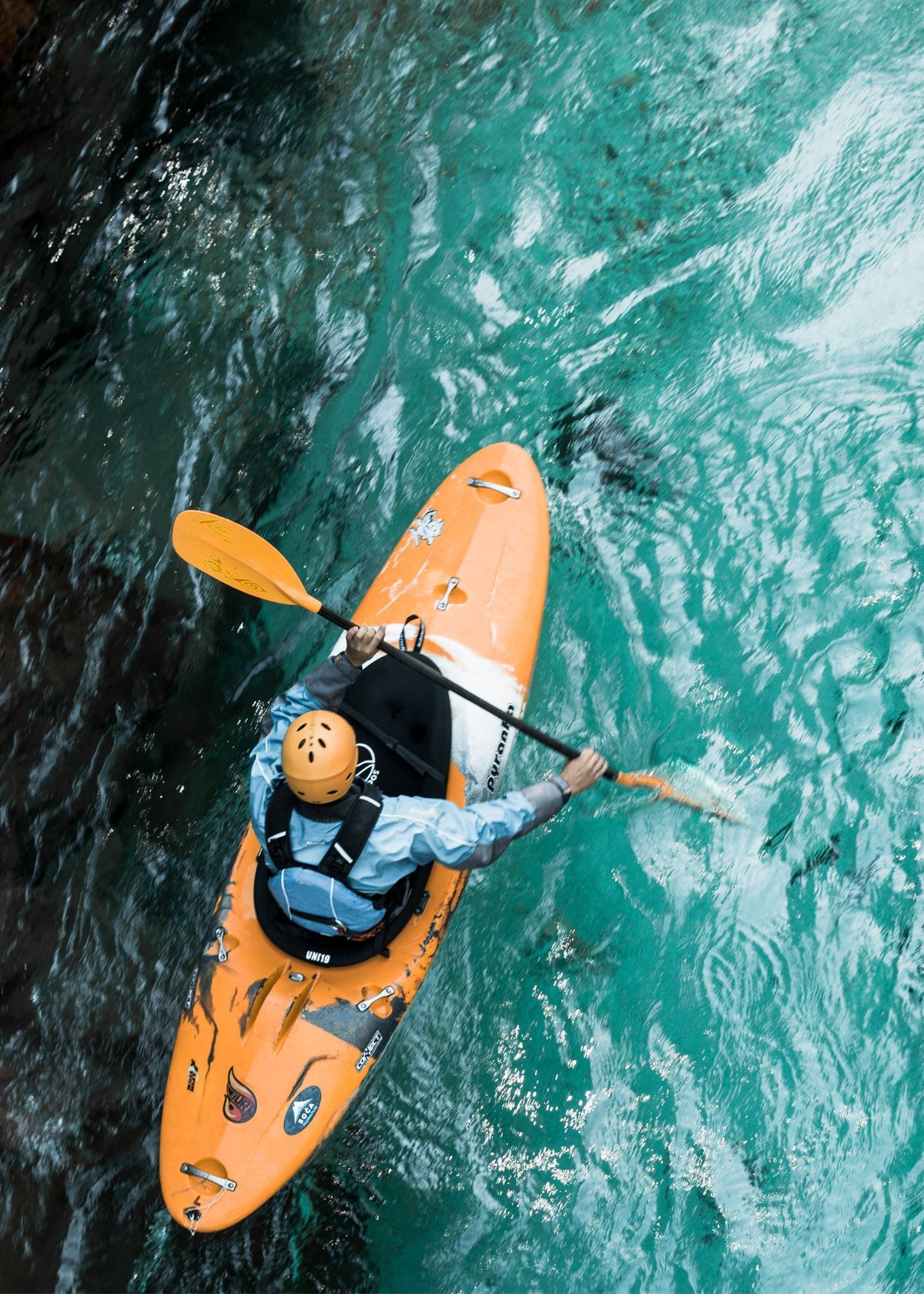
How to Grip the Kayak Paddle
The most important thing to remember when gripping a kayak paddle is to keep your hands on both grips of the paddle throughout your stroke. This will help prevent wrist strain and reduce fatigue. To get started, grip the paddle with one hand on the shaft below your hand and one hand above. Adjust these positions as needed until you find the best fit for you.

Next, place your hands at about shoulder-width apart on top of each other so that they are facing opposite directions. Your thumbs should be pointing down toward the water, and your palms should be facing up toward your face.
Make sure you can see all four fingers on each hand when looking at them from above, then tighten up any loose areas by pressing down on them with your other hand until both grips feel comfortable in your hands.

How to Paddle a Kayak Perfectly
When paddling a kayak, it's important to keep your balance and not tip over. But how do you do that?
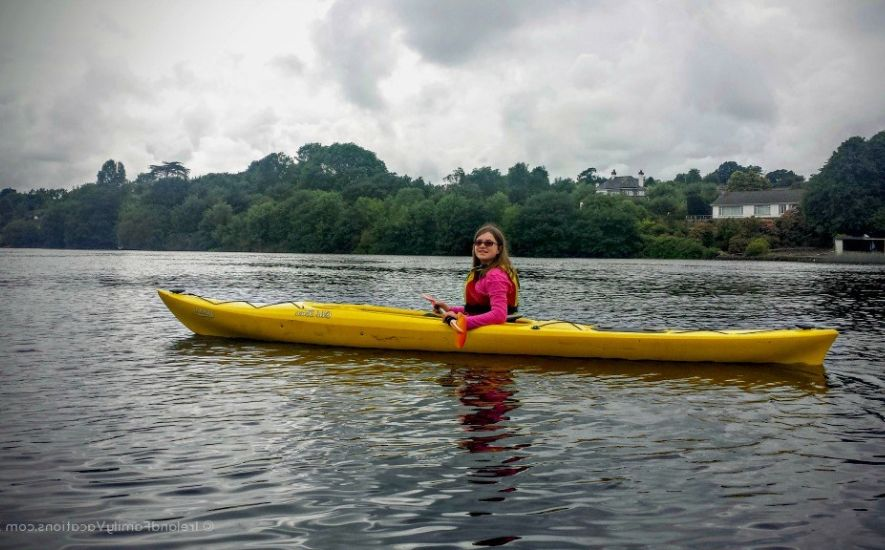
The best way to balance a kayak is to keep your body straight and sit up tall. If you're having trouble staying upright, try practicing with an empty kayak or one that has a low center of gravity (like a touring boat).
If you're still having difficulty balancing in your canoe, here are some tips:
Sit comfortably in your kayak
Start by sitting in front of your kayak. You'll want to sit in the center or slightly behind the center if you're right-handed. This will give you more mobility when paddling and allow you to see where you are going.
If there is no center seat, try placing yourself so that your back is against one side of the boat while keeping your feet on the other side. This will help keep you balanced while paddling.
Determine which side you prefer
If there is no center seat or backrest, determine which side of the boat feels most comfortable to paddle from. Then make sure that when paddling, both hands are positioned on either side of this same side so that they are equally balanced and work together to move forward together effectively.
Make a J-stroke pullback
Another step is to pull your paddle backward so that the paddle blade is away from your kayak. You should do this until your hand reaches its furthest point from your body.
The blade should face down into the water as you move it back and forth. This will help you get the maximum power from each stroke.
Rotate the blade of the paddle
Once you've got enough power in your stroke, rotate your wrist so that the blade points outwards towards the middle of your kayak. You then need to continue pushing down into the water with both hands on either side of your craft until they're pointing downwards again.
This will give you more power when pushing forwards through each stroke and ensure that there's no wasted energy when paddling through rough water or waves.
Repeat the J-stroke
Repeat the J-stroke on the other side to continue moving forward. Use this kayak paddling technique in open water or against wind or waves — it's much easier than trying to paddle straight into them because it keeps your momentum moving forward rather than stopping and starting over again every time you turn around.
To stop your kayak
Stopping a Kayak is simple and easy. It can be done in several ways, and depending on the type of paddling you do, there are different ways to stop.
The main reason for stopping is to avoid danger or collision with obstacles in the water. Stopping quickly is also important if you need to make an emergency exit from your kayak.
You can stop your kayak by using your paddle as a brake, using your paddle as an anchor, using the foot pedals, or even using a front deck bungee cord.
When stopping with this method, you want to keep your paddle parallel to the water surface and apply pressure on the blade closest to the boat. This will help prevent it from slipping out of your hands while providing some resistance as you slow down or stop.
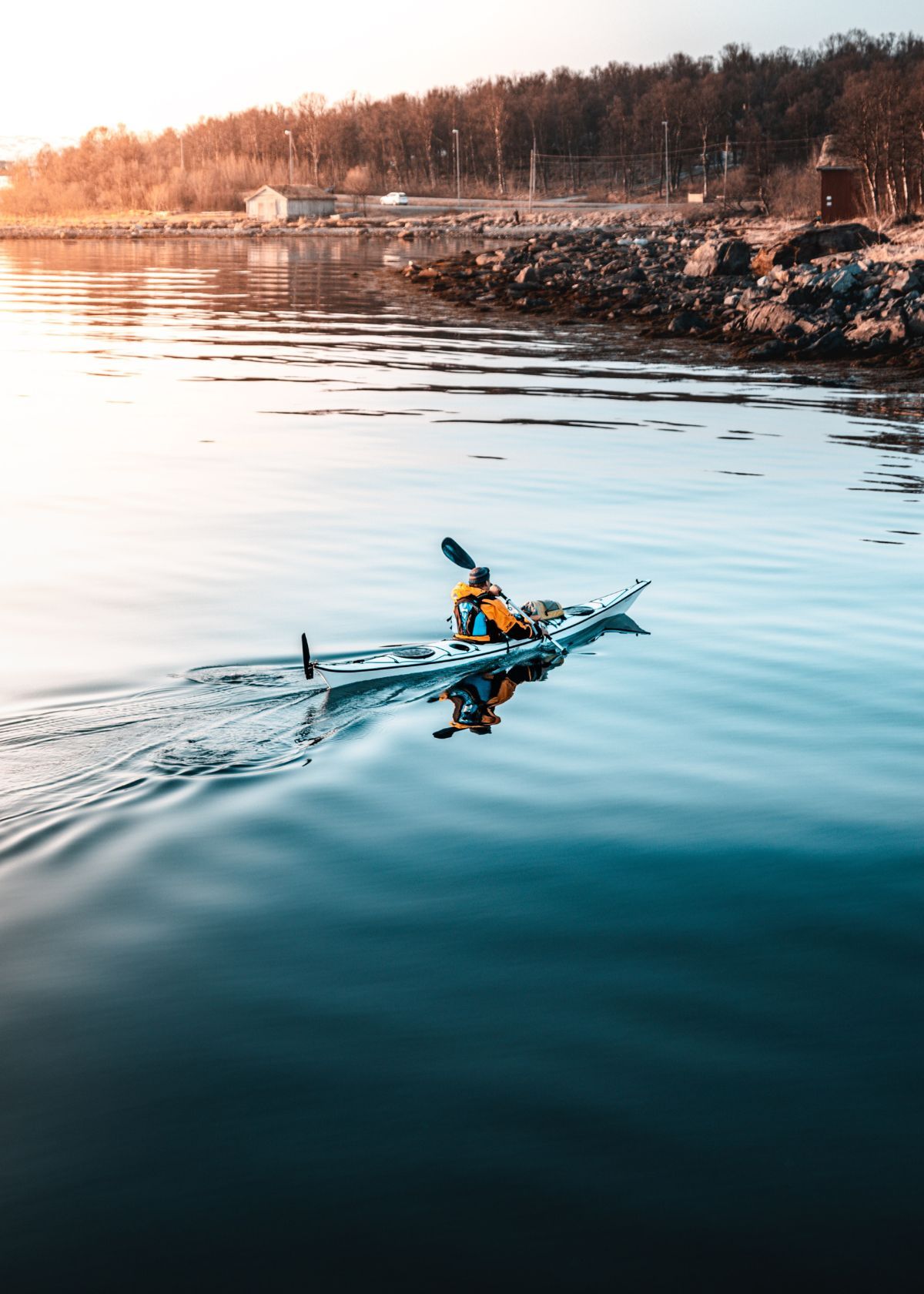
Basic Forward and Backward Strokes
Kayaking is a fun and challenging water sport that requires proper techniques to maximize efficiency, speed, and control. The two basic kayak strokes in kayaking are the forward stroke and the backward stroke.
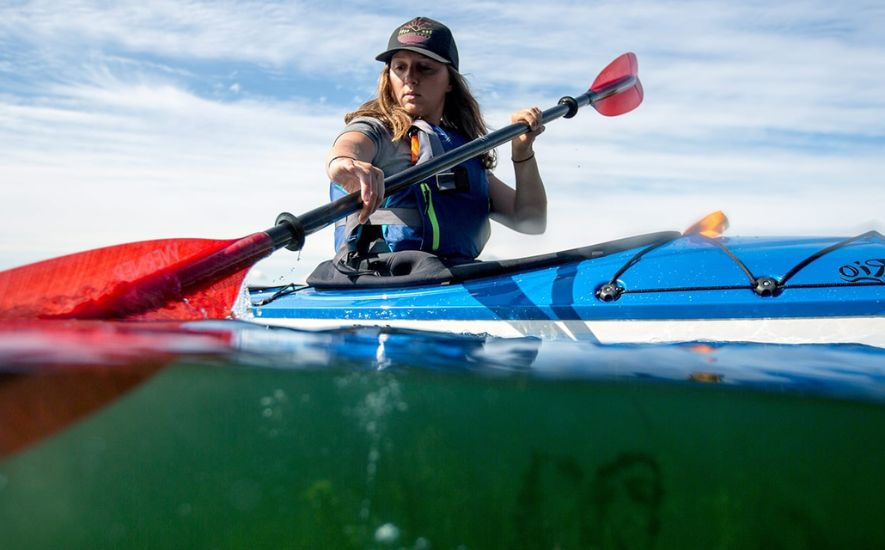
Forward Stroke
The forward sweep stroke is used to propel the kayak forward. It involves the following steps:
- Start with your paddle parallel to the kayak, with hands shoulder-width apart on the paddle.
- Reach forward with the paddle and plant it in the water, making sure to keep your arms straight.
- Twist your torso and use your core muscles to pull the paddle towards your hip, pulling water towards the back of the kayak.
- Repeat the process on the other side to continue propelling the kayak forward.
Using both arms equally and keeping your movements smooth and consistent to maintain a straight line is important.
Backward Stroke
The backward or reverse stroke is used to slow down or stop the kayak or to reverse its direction. It involves the following steps:
- Place the paddle vertically behind the kayak, with the paddle blades facing toward the back of the boat.
- Reach forward with both hands and pull the paddle toward the back of the kayak, using your core muscles to generate power.
- Repeat the process on the other side to slow down or stop the kayak.

How to Paddle a Kayak FAQs
Paddling a kayak can be a fun and relaxing activity. However, it is not as easy as it looks. You must know how to paddle properly before getting on the water.
The following are some frequently asked questions about paddling that may help answer some of your questions:
What is the proper technique for paddling a kayak?
Proper paddling involves using your upper body, rather than just your arms, to generate power. Here are the steps for a basic kayak stroke:
- Sit comfortably in the kayak with your hips against the backrest.
- Reach forward with your dominant hand and grasp the paddle.
- Place the blade of the paddle in the water near your feet and rotate your torso to bring the blade into the water.
- Pull the blade through the water, keeping your arms straight and using your core muscles to generate power.
- As the blade reaches your hip, rotate your torso in the opposite direction to release the blade from the water.
- Repeat the stroke on the opposite side to maintain a steady rhythm and propel the kayak forward.
What are the three golden rules to paddling in a kayak?
The three golden rules for paddling in a kayak are:
Maintain Proper Posture
Keep your back straight, your arms relaxed, and your eyes forward to maintain balance and control while paddling.
Use the Proper Paddle Technique
Alternate kayak paddle strokes on either side of the kayak to maintain a straight course and conserve energy.
Be Prepared for Emergencies
Always wear a personal flotation device and be familiar with basic self-rescue techniques in case of capsizing.
How do you start a kayak for beginners?
Here are the basic steps to start kayaking as a beginner:
- Choose the right kayak: Decide on the type of kayaking you want to do and choose a suitable kayak.
- Learn proper techniques: Familiarize yourself with basic kayaking techniques, such as how to paddle, steer, and maintain balance.
- Wear appropriate gear: Wear a personal flotation device (PFD), and consider wearing a kayaking spray skirt, hat, sunglasses, and gloves if necessary.
- Launch and enter the kayak: Launch the kayak into calm, shallow water and sit inside, making sure to keep the kayak balanced.
- Start paddling: Begin by using a forward stroke to move away from shore, and then experiment with different strokes to turn and maneuver the kayak.
- Stay safe: Always be aware of your surroundings and follow basic safety guidelines, such as staying away from dangerous areas and being mindful of weather conditions.
- Practice: The more you kayak, the more comfortable and confident you will become.
How do you paddle a basic stroke on a kayak?
To perform a basic draw stroke on a kayak, follow these steps:
- Hold the paddle correctly: Grip the paddle at the center with one hand, and the other hand placed slightly lower on the paddle shaft.
- Position the kayak correctly: Make sure the kayak is perpendicular to the direction of travel, and the blade is close to the side of the kayak.
- Dip the paddle in the water: On one side of the kayak, reach forward and dip the blade into the water.
- Pull the paddle towards the kayak: Move the blade back towards the kayak, pulling the water towards the back of the kayak to generate forward propulsion.
- Repeat on the other side: Repeat the stroke on the other side to maintain balance and steer the kayak.
- Keep your arms straight: Keep your arms straight and your upper body relaxed while paddling to maintain good posture and conserve energy.
Is kayaking hard for beginners?
Kayaking can be a fun and challenging activity for beginners. The difficulty level can vary depending on factors such as the type of kayaking (e.g., recreational, whitewater), water conditions, and personal fitness and coordination.
Most people can develop the necessary skills to enjoy kayaking with proper instruction and practice. However, as with any new activity, starting slowly and building up your experience and confidence over time is important.
What are the dos and don'ts of kayaking?
Do's of kayaking
- Wear a life jacket
- Learn and follow proper paddling techniques
- Check the weather and water conditions before heading out
- Use a helmet for white-water kayaking
- Keep the necessary safety gear, such as a whistle and first-aid kit
- Know your limits and choose a route that suits your skill level
- Respect the environment and follow Leave No Trace principles
- Plan your trip, including an itinerary and communication plan
Don'ts of kayaking:
- Don't kayak alone, especially in remote areas
- Don't exceed your skill level or attempt to paddle in hazardous conditions
- Don't kayak under the influence of drugs or alcohol
- Don't overload your kayak, as it can affect stability and safety
- Don't touch or disturb wildlife or their habitats
- Don't litter or leave anything behind
- Don't ignore warning signs or disregard the advice of park rangers or lifeguards
- Don't ignore or neglect basic safety rules and regulations.
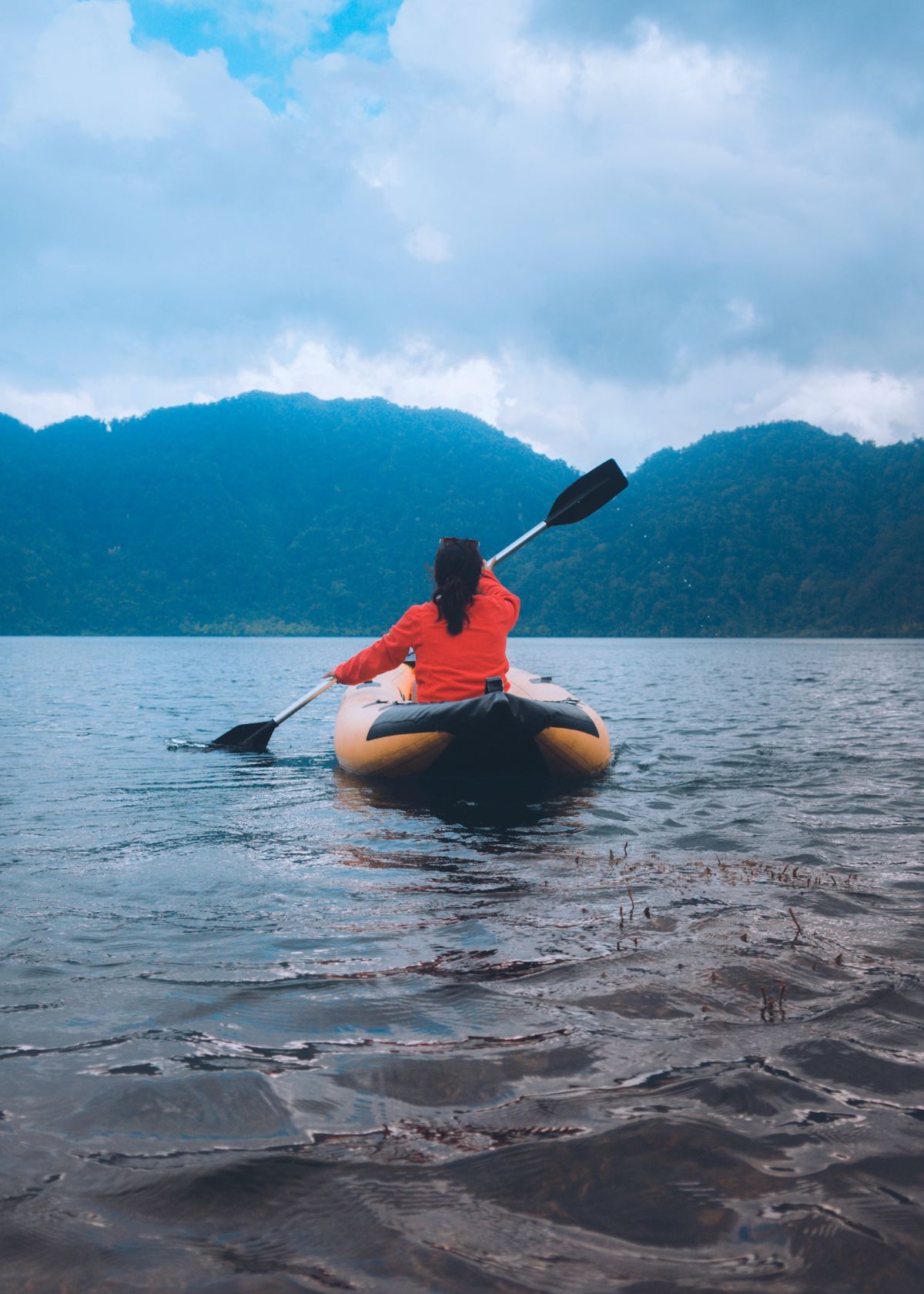
Conclusion
In conclusion, paddling a kayak is a fun and exhilarating activity that requires basic knowledge and practice to master. The key to successful kayaking is maintaining proper posture, using efficient paddle strokes, and being aware of your surroundings.
Remember to take it slow and stay relaxed, and don't be afraid to seek help from experienced kayakers if you need it. With time and dedication, you'll soon be navigating the water easily and confidently. Happy paddling!





